Curious About Early Twitter? 5 Key Facts From 2007
Here are five things you might not have known about Twitter in 2007, the year it broke out as a leading social media tool. For starters, it was termed microblogging and the word 'tweet' wasn't yet common.
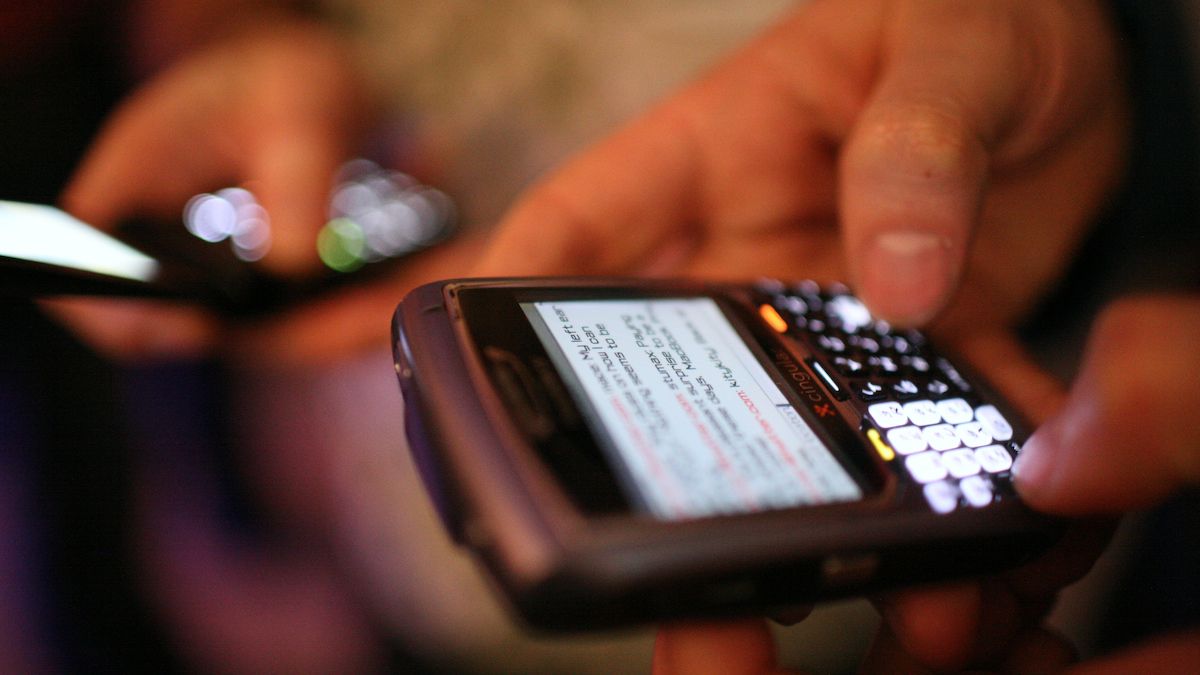
The first big influx of people signed up to Twitter in March 2007, after it became a breakout app at the annual SXSW conference in Austin, Texas. But even web geeks didn't quite know what to make of Twitter. Was it an “IM/blogging hybrid," as I described it in June 2007, a month or so after I'd joined. Was it a "microblogging" app, like Tumblr, another trendy internet site to launch that year? Or was it "a weird experiment normally found in neuroscience labs," as a colleague of mine said?
Well, in this post I'd like to highlight five key features of Twitter in 2007 — before it was christened "social media" and while Web 2.0 was still thought of as an open web paradise.
1. “What are you doing?”
This was the prompt that Twitter users saw throughout 2007. It explains why so many early tweets were about eating lunch. To be fair, nobody knew back then how to do microblogging, the 2007 term for writing short posts — 140 characters or less in Twitter's case. Along with Facebook and Flickr, Twitter was literally inventing social media.
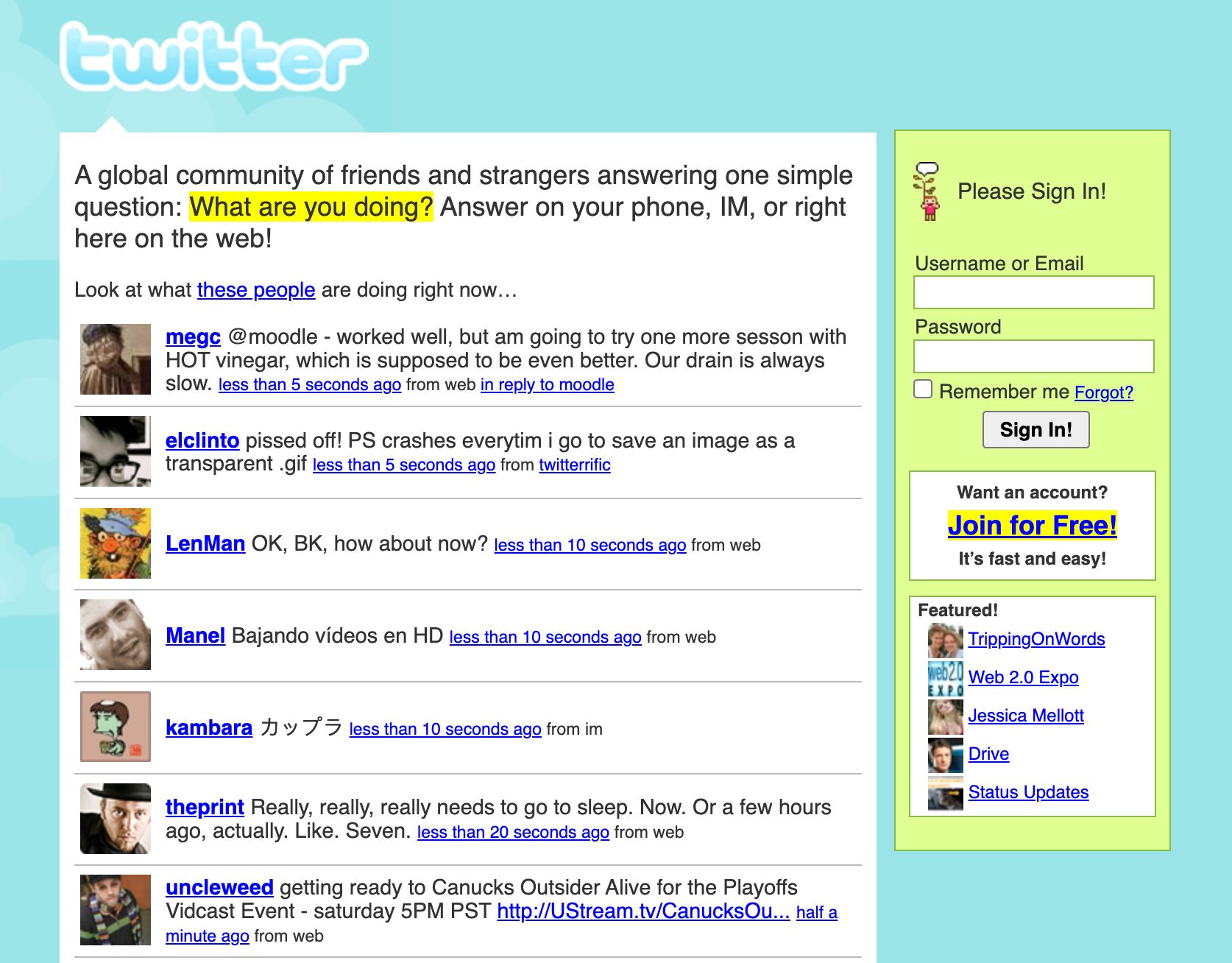
2. They Weren't Called Tweets
When Twitter first came out, what you posted were simply called "updates."
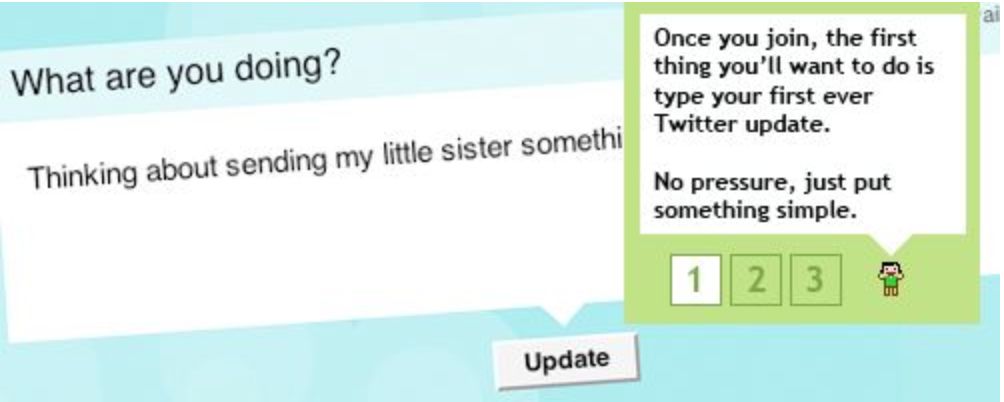
When Craig Hockenberry created a third-party Twitter client called Twitterrific in December 2006, he started calling updates "twits." Then in early January 2007, Twitter engineer Blaine Cook suggested "tweet":

The next day, Hockenberry changed "twits" to "tweets" in his app. However, it took another year for Twitter to formally use "tweet" in its promotions. So for all of 2007, they were officially just "updates."
3. Twitter's API Had 10x Traffic
The API was what encouraged a thousand Twitter apps to bloom. Co-founder Biz Stone said in September 2007:
“The API has been arguably the most important, or maybe even inarguably, the most important thing we’ve done with Twitter. It has allowed us, first of all, to keep the service very simple and create a simple API so that developers can build on top of our infrastructure and come up with ideas that are way better than our ideas ... So the API, which has easily 10 times more traffic than the website, has been really very important to us.”
As you can see, very quickly the API — used to create apps like Twitterrific — became the leading source of Twitter traffic.
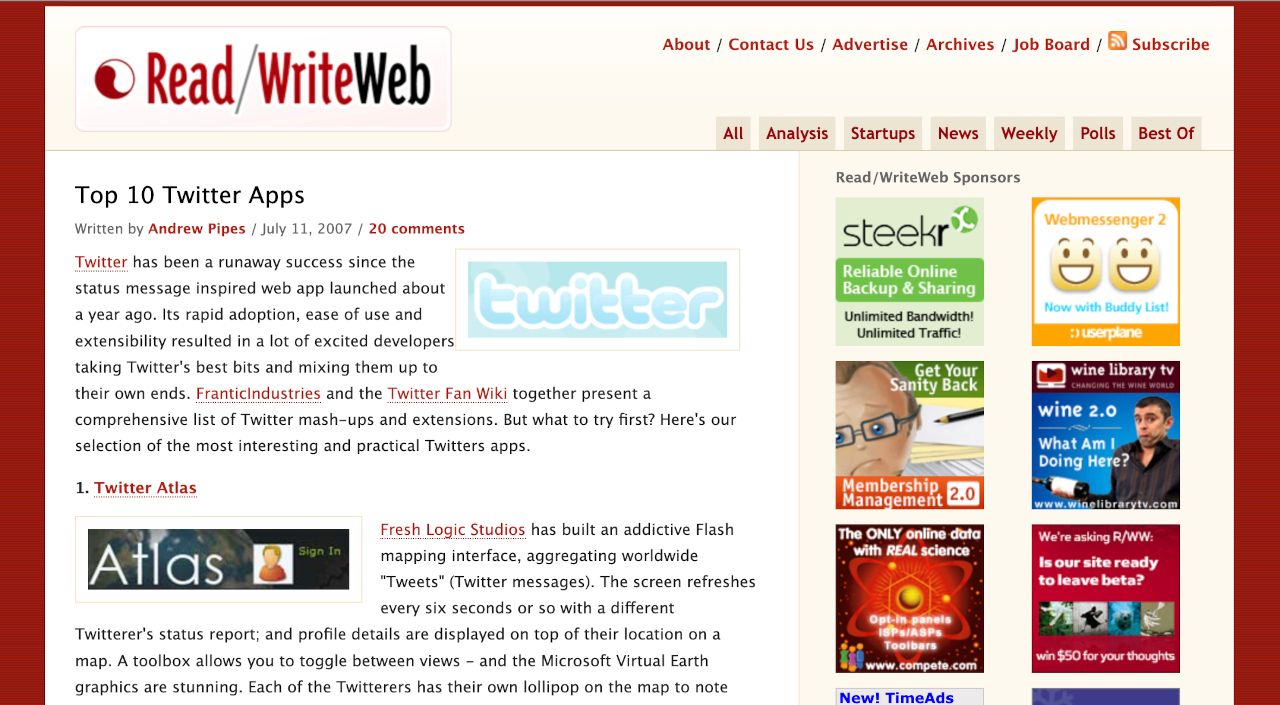
4. 40% Used Third-Party Apps
By November 2007, when my ReadWriteWeb colleague Marshall Kirkpatrick published a survey of "the world's most popular Twitter clients," there was a thriving ecosystem built on Twitter's API.
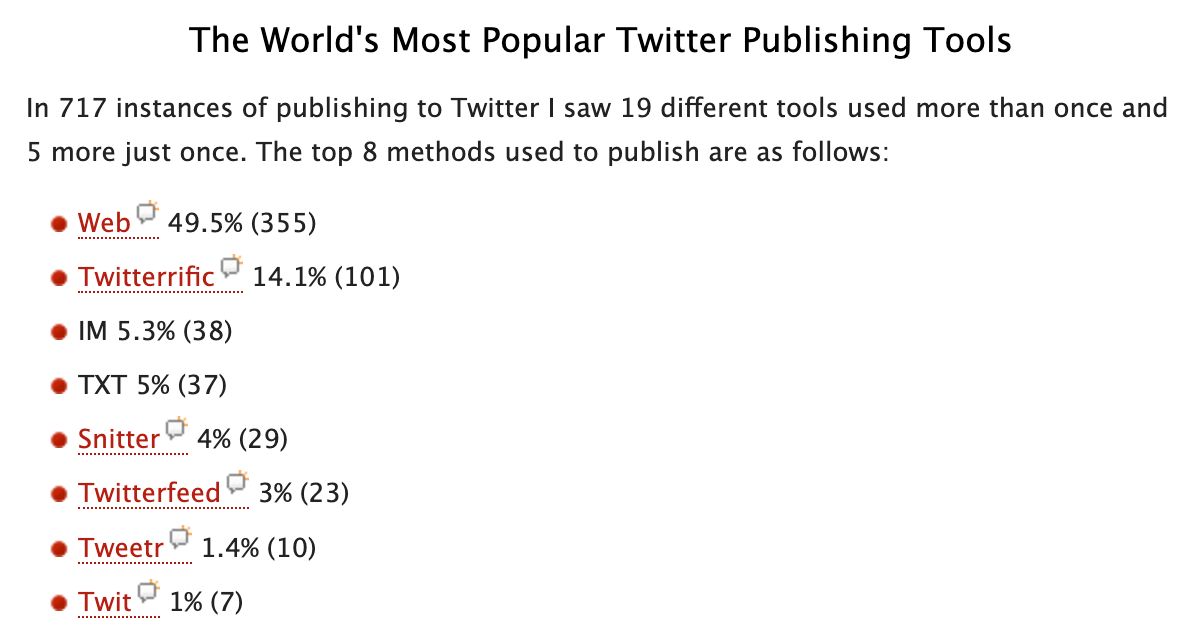
Although about half of respondants used the Twitter website and a further 10% still used IM or txt, third-party tools accounted for about 40% of usage. Not bad, considering this was months before popular apps like TweetDeck and Tweetie were released (both came out in 2008 and were eventually acquired by Twitter).
5. Hashtags Were Born in 2007
Hashtags were first proposed on Twitter on August 23, 2007, by Chris Messina, a Silicon Valley product manager. He suggested using the pound (#) symbol to create groups on Twitter.
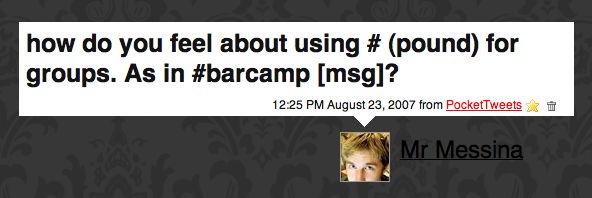
As Messina tells it, Twitter initially rejected hashtags (later confirmed by Biz Stone), but over the next year or two the feature slowly gained traction thanks to Messina and his online friends. Twitter formally adopted hashtags as a clickable feature a couple of years later.
Lead image: Twitter being used in March 2007 at SXSW; photo by Scott Beale / Laughing Squid
Buy the Book
My Web 2.0 memoir, Bubble Blog: From Outsider to Insider in Silicon Valley's Web 2.0 Revolution, is now available to purchase:
- Paperback, US$19.99: Amazon; Bookshop.org
- eBook, US$9.99: Amazon Kindle Store; Apple Books; Google Play
Or search for "Bubble Blog MacManus" on your local online bookstore.